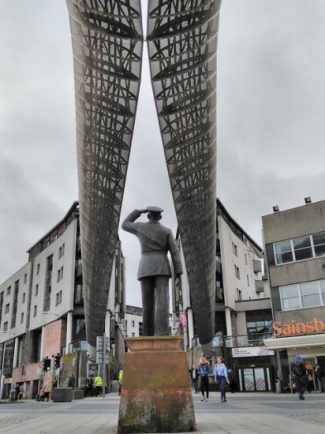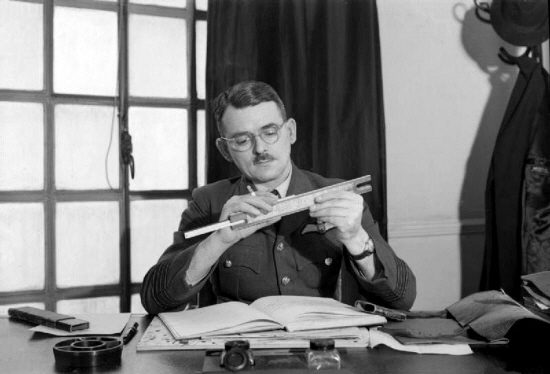A JET ENGINE sculpture dedicated to Coventry inventor Sir Frank Whittle could be installed outside the University of Warwick campus.
A fan from a Rolls Royce designed jet plane will be erected on Gibbet Hill Road, Coventry, if a planning application to Warwick District Council is successful.
A planning officers’ report recommends the tribute sculpture plans are approved.
An engine’s titanium fan blades – on a black galvanised steel support frame – would be on public view at a roundabout near the campus.
Sir Frank Whittle, born in Coventry in 1907, is credited with inventing the jet engine after the formation of his company Power Jets Ltd – which first tested the technology in 1941.
The blades come from the Rolls Royce RB 211 engine – the first ‘three spool’ turbofan model in production.
Its success turned the comany into a global leader of the aeroplane industry after the engine’s development in the late 1960s.
The University of Warwick says the installation will also mark the tenure of Sir George Cox – a trained aerospace engineer – as chair of council and pro-chancellor of the university from 2014 to last year.
Michelle Small BSc (Hons), a chartered architectural technologist, wrote a letter to Warwick District Council proposing the idea.
She wrote: “From the imagination of a young man from Coventry came an invention that revolutionised not only industry but our experience of the world.
“Creativity is central to the University of Warwick. It is the fuel of a powerhouse; it changes fixed minds into critical minds and allows us to imagine the unknown. Across the campus, different trails connect over 20 public sculptures.
“The Sculpture Park is at the centre of initiatives where different communities fuel their curiosity and develop their creative thinking and practice.”
The report concludes that the development is acceptable in principle and would not cause harm to the surrounding area.
It states: “It is clear how the proposed sculpture not only links physically to other existing sculptures which form part of an established trail across the wider campus, but also recognises a local connection between the inventor of the jet engine and a
leading figure of importance in both the engineering profession and also the university itself.”
Frank Whittle was the son of a mechanic who eventually qualified as a pilot officer for the Royal Air Force in 1928.
It was on duty that Whittle developed and perfected his thesis that planes would need to begin flying at high altitudes where the air resistance was lower.
He found the piston engines and propellers on existing jets would not generate sufficient power to achieve this.
Whittle concluded gas turbines and rockets would be needed to produce a fast flow to propel a plane to higher altitudes.
The idea for the new jet engine was mass produced for the first time in the United States by General Electric.
Whittle retired from the RAF in 1948 and then moved to the United States to teach at US Naval Academy in Annapolis.
He died in 1996 and has since been immortalised as one of Coventry’s most significant figures.
A statue in his honour was erected in 2007, underneath the Whittle Arch, outside the Transport Museum in the city centre.













